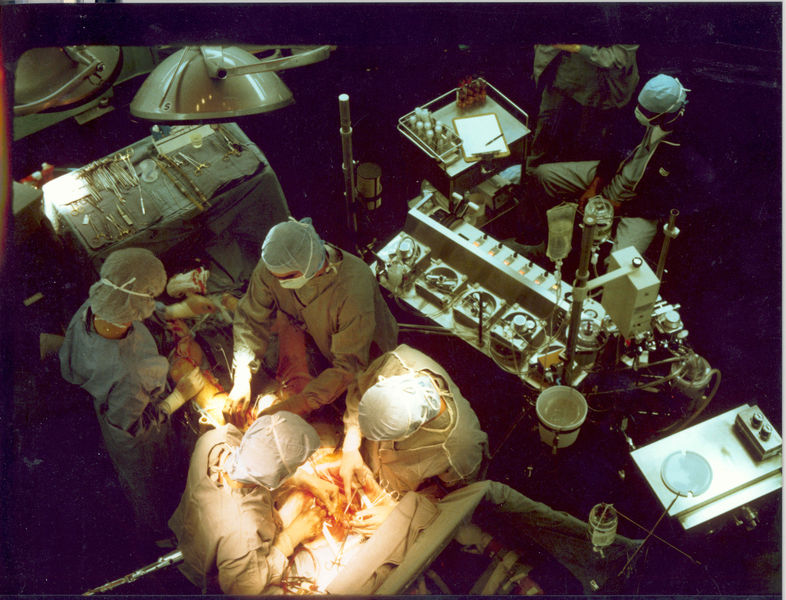To fix most cardiac defects, the heart surgeon requires a bloodless, motionless field in which to work. To achieve this, the motion of the heart and lungs must be stopped.
For this to happen, there needs to be a means for blood to circulate through the body, delivering the necessary nutrients and oxygen to maintain life, while the heart and lungs are stopped. This is made possible through a process known as cardiopulmonary bypass (CPB).
Clear tubing (PVC) contains the patients’ blood as it is removed from the body. Large bore catheters (called cannula) are placed in the right side of the heart, allowing the desaturated blood from the body to enter the cardiopulmonary bypass unit. The PVC tubing runs through a mechanical pump that can be regulated to the proper cardiac output for a particular patient.
For example, a 5-year-old child has a much smaller cardiac output than an adult does; so the pump must run at a higher rate for an adult patient than a child. More tubing sends blood from the mechanical pump to a gas exchange device called an oxygenator, or artificial lung.
The oxygenator performs the same job as the lungs: oxygenation of the blood as well as removal of carbon dioxide. This re-oxygenated blood is then put back into the body through other tubing placed in the aorta.
Cardiopulmonary bypass permits the patients’ blood to bypass the heart and lungs, giving the desired bloodless, motionless operative environment while still supplying all the other organs of the body with a constant supply of oxygen and nutrient-rich blood.
